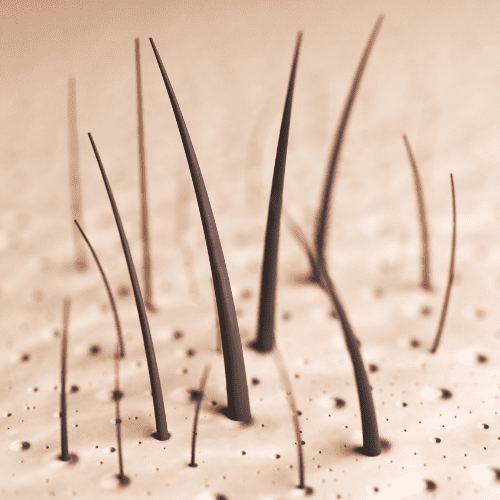The intricacies of hair growth often go unnoticed in our daily lives. Hair not only serves as a significant aspect of personal identity but also reflects overall health and well-being. To appreciate the complexities of hair, it is essential to understand the hair growth cycle—a biological process that dictates how hair grows, rests, and sheds. This article will delve into the various phases of the hair growth cycle and explore the numerous factors that influence it. By gaining insights into these elements, we can develop a deeper appreciation for hair care and maintenance.
The Phases of the Hair Growth Cycle: An In-Depth Analysis of Anagen, Catagen, and Telogen Stages
The hair growth cycle consists of three primary phases: Anagen, Catagen, and Telogen. The Anagen phase is the most critical stage, where active hair growth occurs. Lasting from two to seven years, this phase varies significantly among individuals and is influenced by genetic and environmental factors. During Anagen, hair follicles undergo rapid cell division, producing new hair shafts that emerge from the scalp. The length and quality of hair largely depend on the duration of this phase, which is why some individuals enjoy longer, fuller hair compared to others.
Following the Anagen phase is the Catagen phase, a transitional period that lasts approximately two to three weeks. During this stage, the hair follicle begins to shrink, and the lower portion of the hair strand detaches from the blood supply. This process indicates that the hair is preparing to enter the resting phase. Although this transition may seem insignificant, it plays a crucial role in regulating hair density and ensuring that new hair can emerge as older hair naturally sheds. Understanding the Catagen phase helps highlight the dynamic nature of hair growth and the importance of supporting healthy follicle function.
The final stage of the hair growth cycle is the Telogen phase, which lasts around three to four months. In this resting phase, hair is no longer actively growing, and the follicle is in a state of dormancy. At the end of the Telogen phase, the hair is shed, making way for new hair to emerge from the follicle. It is essential to note that shedding is a normal part of the hair growth cycle; individuals typically lose 50 to 100 hairs daily. Recognizing the purpose of each phase enhances our understanding of hair biology and informs more effective strategies for hair care and management.
Factors Influencing the Hair Growth Cycle: Genetics, Hormones, and Environmental Impacts
Several factors significantly influence the hair growth cycle, starting with genetics. An individual’s genetic makeup determines not only the rate at which hair grows but also its density, texture, and susceptibility to hair loss conditions, such as androgenetic alopecia. Genetic predispositions can manifest as varying hair growth patterns and conditions, underlining the importance of recognizing one’s inherited traits. Understanding these genetic influences assists individuals in managing their hair more effectively, as they can tailor their care regimens based on their unique characteristics.
Hormones also play a pivotal role in the hair growth cycle, with androgens being among the most influential. These hormones can impact hair follicle activity, leading to increased hair growth in some areas while causing thinning or loss in others. For instance, fluctuations in hormone levels during puberty, pregnancy, or menopause can lead to noticeable changes in hair density and growth patterns. Awareness of these hormonal impacts allows individuals, particularly those experiencing hair loss, to seek targeted treatments that address their specific hormonal imbalances and promote healthier hair growth.
Environmental factors contribute significantly to hair health and growth. External elements such as pollution, stress, and poor dietary choices can adversely affect hair follicles, leading to reduced growth or increased shedding. For example, exposure to environmental toxins can weaken hair strands and disrupt the natural growth cycle. Similarly, chronic stress is known to impact hormone levels, further affecting hair health. By understanding the environmental influences on hair growth, individuals can implement lifestyle changes—such as improving diet, reducing stress, and minimizing exposure to harmful substances—to foster a more conducive environment for healthy hair growth.
In summary, understanding the hair growth cycle is essential for appreciating the complexities of hair development and maintenance. The three phases—Anagen, Catagen, and Telogen—each play crucial roles in determining hair density, health, and overall appearance. Additionally, recognizing the various factors that influence these phases, including genetics, hormones, and environmental conditions, empowers individuals to take proactive steps in promoting optimal hair health. By blending knowledge of the hair growth cycle with informed hair care practices, we can work towards achieving healthier, more vibrant hair.




